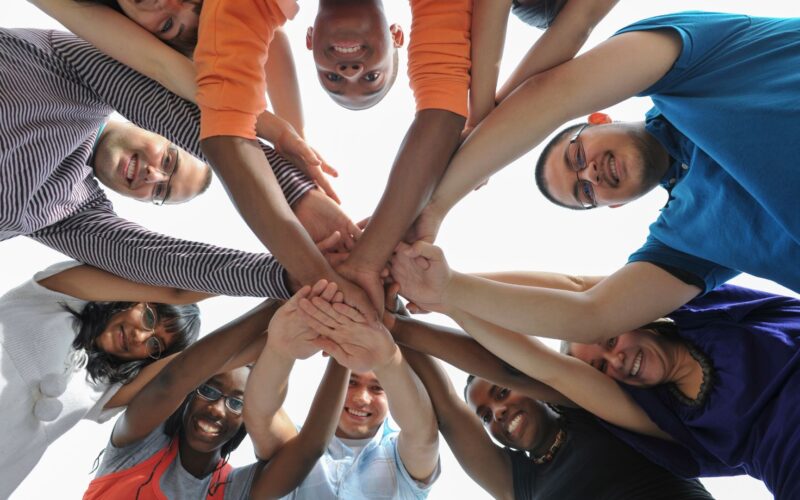February 17th marks National Random Acts of Kindness Day, a celebration that inspires individuals, businesses, and schools across the United States to engage in simple, thoughtful acts. What began in 1995 with a small nonprofit in Denver, Colorado, has now expanded internationally, highlighting the power of kindness to create a ripple effect of positivity.
While the day itself is important, it also offers a valuable reminder: kindness should be an everyday habit, especially in schools. Kindness not only improves social connections but also plays a critical role in supporting student mental health and social-emotional learning (SEL) skills. Sometimes, the smallest gestures make the most significant impact.
The History and Importance of Random Acts of Kindness
The original idea behind Random Acts of Kindness Day was simple: brighten someone’s day by intentionally choosing kindness. A compliment, a thoughtful note, or a helping hand can create emotional connections that strengthen communities.
Over time, educational institutions have recognized the power of kindness in shaping school culture. More schools now use National Random Acts of Kindness Day as a springboard for broader kindness initiatives, embedding this SEL skill into everyday classroom practices.
Kindness as a Core SEL Skill
Kindness is a foundational aspect of SEL that students should begin learning early in life. SEL programs teach students skills like self-awareness, self-regulation, relationship building, and responsible decision-making—all of which are closely tied to acts of kindness.
Kaplan et al. (2016) demonstrated the wide-reaching benefits of kindness-centered SEL curricula. Their study focused on four key areas:
- Kind Mind: Nurturing positive mental experiences
- Self-Kindness: Fostering self-compassion and awareness
- Social Kindness: Building empathy toward others
- Kindness in Action: Encouraging active gestures of goodwill
Schools that implemented kindness programs reported improvements not only among students but across the entire community. Students learned conflict resolution without adult intervention, stayed focused longer, and developed better coping skills. Meanwhile, campuses became cleaner, safer, and more welcoming. Families noticed stronger sibling relationships and better parent-child communication.
The Academic and Emotional Benefits of Teaching Kindness
In a related study, Flook et al. (2015) found that a three-month mindfulness-based kindness curriculum improved students’ report card scores in areas such as learning, health, and social-emotional development. Students showed greater social competence and delayed gratification—both essential for academic success.
But the benefits of kindness go beyond academics. A 2021 study by Datu et al. demonstrated that kindness initiatives in schools helped students experience more positive emotions and fewer depressive symptoms. Teaching students to include, encourage, and support others fosters a strong sense of belonging. This sense of belonging contributes to emotional well-being and creates a thriving school environment.
Kindness also has biological benefits. Dr. Waguih William IsHak, a psychiatrist at Cedars-Sinai, explains that kindness triggers the release of oxytocin, a hormone that strengthens bonds and reduces anxiety. Mindfulness-based therapies that emphasize gratitude and acts of kindness have proven effective in managing mental health conditions like depression and anxiety (Cedars-Sinai Staff, 2019).
Kindness and Mental Health: Building a Community of Support
When students practice kindness consistently, they are not only improving the lives of others—they are strengthening their own emotional resilience. A culture of kindness transforms the school community, leading to:
- Reduced bullying and conflict
- Increased student engagement and motivation
- Higher levels of trust between students and teachers
- More positive peer relationships
- Better overall school climate
By embedding kindness into everyday routines, schools can significantly boost student mental health, creating a safe and nurturing learning environment.
Random Acts of Kindness Day: Ideas for Schools
National Random Acts of Kindness Day offers a meaningful opportunity for schools to celebrate kindness and introduce students to simple, powerful ways to make a difference. Here are some easy and effective ideas:
- Kindness Compliment Circle: Allow students to share one positive comment about a peer.
- Thank-You Notes: Encourage students to write notes to teachers, administrators, parents, or community members.
- Kindness Challenges: Post daily kindness prompts, such as “Hold the door for someone” or “Help a classmate with their work.”
- Community Clean-Up: Organize a short clean-up activity around the playground or neighborhood.
- Mindful Moments: Spend time in class reflecting on ways students have received or given kindness.
These activities do not have to be expensive or time-consuming. Even small gestures can have a lasting impact on school climate and student well-being.
Everyday Kindness: Building SEL Skills Year-Round
While Random Acts of Kindness Day serves as an important reminder, schools should work to make kindness a daily practice. Kindness must be woven into the fabric of the school day to create lasting change.
As Dr. IsHak notes, “You can’t live on the 3-to-4-minute oxytocin boost that comes from a single act.” Ongoing kindness, practiced daily, has cumulative benefits for mental health and emotional well-being.
Encouraging consistent kindness can look like:
- Setting classroom kindness goals
- Recognizing and celebrating kind acts during announcements
- Integrating kindness lessons into SEL curricula
- Modeling kind behavior as adults and staff
Programs like Satchel Pulse can support schools in developing these habits. Satchel Pulse’s SEL tools measure students’ growth in social awareness, relationship skills, and emotional development, offering targeted interventions to cultivate a kind and supportive school culture.
How Kindness Strengthens SEL and Mental Health
Research overwhelmingly supports kindness as a critical SEL skill that boosts mental health and academic outcomes. Through kindness, students learn:
- Self-awareness: Understanding their emotions and actions
- Self-management: Regulating emotions through positive behaviors
- Social awareness: Empathizing with peers and valuing diversity
- Relationship skills: Building healthy, supportive connections
- Responsible decision-making: Acting thoughtfully and ethically
Kindness teaches students how to be active contributors to their communities and to their own emotional health. It creates an upward spiral: as students feel better, they perform better academically and contribute to a more positive environment for everyone.
Conclusion: Fostering Kindness for a Healthier Future
Kindness is a powerful tool for improving student mental health, supporting social-emotional development, and building strong school communities. Through intentional acts of kindness—both random and planned—students learn valuable skills that help them navigate challenges, build meaningful relationships, and contribute to a positive, inclusive school culture.
National Random Acts of Kindness Day is a wonderful starting point, but the ultimate goal is to make kindness a habit that students and staff practice every day. In doing so, schools will not only improve mental health outcomes but also help students thrive academically, socially, and emotionally.
By prioritizing kindness, we are creating healthier students, stronger schools, and a more compassionate world.



